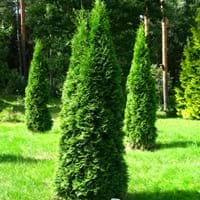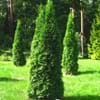Life Span
Perennial
Perennial
Type
Needled or Scaled Evergreen
Grass
Origin
Northeastern United States, Mid-Atlantic United States, Southeastern United States, North-Central United States, Central United States, Canada
United States, Northeastern United States, Mid-Atlantic United States, Southeastern United States, North-Central United States, Central United States, South-Central United States, Texas
Types
Not Available
Virginia water horehound
Habitat
Forests, gardens, Roadsides
Along Railroads, Barren waste areas, Hill prairies, Mined land, Pastures, Roadsides, Rocky glades, Sandy areas, Upland, Upland clay prairies, Upland sand prairies, Upland sandy savannas, Upland savannas, Upland soils
USDA Hardiness Zone
3-7
5-8
Sunset Zone
A2, A3, 1a, 1b, 2a, 2b, 3a, 3b, 4, 5, 6, 7, 8, 9, 15, 16, 17, 21, 22, 23, 24
Not Available
Habit
Pyramidal
Clump-Forming
Flower Color
Non Flowering Plant
Not Available
Flower Color Modifier
Bicolor
Bicolor
Fruit Color
Green, Light Green
Not Available
Leaf Color in Spring
Dark Green
Green
Leaf Color in Summer
Dark Green
Light Green
Leaf Color in Fall
Olive, Dark Green
Orange, Tan, Brown
Leaf Color in Winter
Dark Green, Brown, Black
Tan, Sandy Brown
Leaf Shape
Compound
Grass like
Plant Season
Spring, Summer, Fall, Winter
Summer, Fall, Winter
Sunlight
Full Sun, Partial Sun
Full Sun, Partial Sun, Partial shade
Type of Soil
Clay, Loam, Sand
Loam, Sand
The pH of Soil
Acidic, Neutral
Acidic, Neutral, Alkaline
Soil Drainage
Average
Well drained
Bloom Time
Spring
Early Fall, Fall
Tolerances
Drought
Pollution, Drought
Where to Plant?
Ground
Ground
How to Plant?
Seedlings, Vegetative Reproduction
Divison, Root Division, Seedlings
Plant Maintenance
Medium
Medium
Watering Requirements
Average Water Needs
Average Water Needs, Medium
In Summer
Lots of watering
Lots of watering
In Spring
Moderate
Moderate
In Winter
Average Water
Average Water
Soil pH
Acidic, Neutral
Acidic, Neutral, Alkaline
Soil Type
Clay, Loam, Sand
Loam, Sand
Soil Drainage Capacity
Average
Well drained
Sun Exposure
Full Sun, Partial Sun
Full Sun, Partial Sun, Partial shade
Pruning
Prune if you want to improve plant shape, Remove deadheads, Shape and thin as needed
Remove damaged leaves, Remove dead branches, Remove dead leaves
Fertilizers
All-Purpose Liquid Fertilizer
All-Purpose Liquid Fertilizer
Pests and Diseases
Pests and diseases free
Red blotch
Plant Tolerance
Drought
Drought
Flowers
None
Insignificant
Flower Petal Number
Single
Single
Fragrant Bark/Stem
Yes
No
Foliage Texture
Fine
Fine
Foliage Sheen
Matte
Matte
Attracts
Bees, Birds
Birds, Butterflies
Allergy
no allergic reactions
Pollen
Aesthetic Uses
Beautification, Landscape Designing
Not Used For Aesthetic Purpose
Beauty Benefits
Not Available
Not Available
Edible Uses
No
Insignificant
Environmental Uses
Air purification
Air purification, Food for birds, Wildlife
Medicinal Uses
No Medicinal Use
Back pain, Diarrhea, Frostbite, Itching, Piles, Sore Eyes, Sore throat
Part of Plant Used
Wood
Root, Seeds, Stem
Other Uses
Showy Purposes
Cattle Fodder, Used As Food, Used as Ornamental plant
Used As Indoor Plant
No
No
Used As Outdoor Plant
Yes
Yes
Garden Design
Hedges, Screening, Wind Break
Dried Flower/Everlasting, Wildflower
Botanical Name
THUJA occidentalis 'Techny'
ANDROPOGON virginicus
Common Name
White Cedar
Broomsedge, Broomsedge Bluestem
In Hindi
Techny Arborvitae
Broomsedge grass
In German
Techny Lebensbaum
broomsedge Gras
In French
Techny Arborvitae
broomsedge herbe
In Spanish
Techny Arborvitae
hierba Broomsedge
In Greek
Techny Arborvitae
Broomsedge γρασίδι
In Portuguese
Techny Arborvitae
Broomsedge grama
In Polish
Techny Tuja
Broomsedge trawy
In Latin
Techny Arborvitae
Broomsedge herba
Phylum
Pinophyta
Magnoliophyta
Class
Pinopsida
Liliopsida
Family
Cupressaceae
Poaceae
Clade
Dicotyledonous
Angiosperms, Commelinids, Monocots
Tribe
Not Available
Andropogoneae
Subfamily
Not Available
Panicoideae
Number of Species
Not Available
Not Available
Season and Care of Techny Arborvitae and Broomsedge
Season and care of Techny Arborvitae and Broomsedge is important to know. While considering everything about Techny Arborvitae and Broomsedge Care, growing season is an essential factor. Techny Arborvitae season is Spring, Summer, Fall and Winter and Broomsedge season is Spring, Summer, Fall and Winter. The type of soil for Techny Arborvitae is Clay, Loam, Sand and for Broomsedge is Loam, Sand while the PH of soil for Techny Arborvitae is Acidic, Neutral and for Broomsedge is Acidic, Neutral, Alkaline.
Techny Arborvitae and Broomsedge Physical Information
Techny Arborvitae and Broomsedge physical information is very important for comparison. Techny Arborvitae height is 300.00 cm and width 150.00 cm whereas Broomsedge height is 60.96 cm and width 30.48 cm. The color specification of Techny Arborvitae and Broomsedge are as follows:
Techny Arborvitae flower color: Non Flowering Plant
Techny Arborvitae leaf color: Dark Green
Broomsedge flower color: Not Available
- Broomsedge leaf color: Green
Care of Techny Arborvitae and Broomsedge
Care of Techny Arborvitae and Broomsedge include pruning, fertilizers, watering etc. Techny Arborvitae pruning is done Prune if you want to improve plant shape, Remove deadheads and Shape and thin as needed and Broomsedge pruning is done Remove damaged leaves, Remove dead branches and Remove dead leaves. In summer Techny Arborvitae needs Lots of watering and in winter, it needs Average Water. Whereas, in summer Broomsedge needs Lots of watering and in winter, it needs Average Water.





